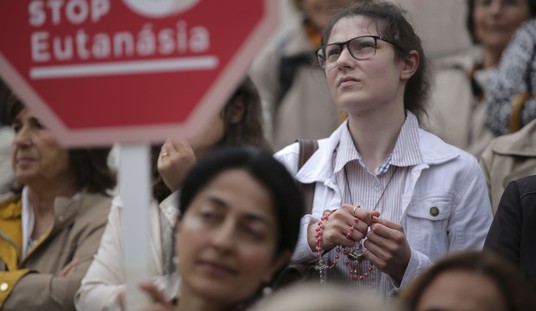What is the difference between Saudi and U.S. policy in the Arabic-speaking Middle East? It’s complex but fascinating and if you can understand the weird twists and turns in this situation you can understand the Middle East. While the two countries may appear aligned in fact–and often when they have the same goals–their policies differ extensively. And the Saudis are not always wrong. Arguably, they are pursuing their own interests more effectively than is the United States.
The Saudis define the four main enemies today as:
–Al-Qaida
–The Muslim Brotherhood
—Iran
–Shia Muslims as political forces: as ruling Iraq; Hizballah in Lebanon; and the Shia majority in Bahrain.
All four of these forces are perceived as threatening Saudi stability and even survival. Al-Qaida, of course, originated as a revolutionary movement to overthrow the Saudi monarchy.
Notably, Israel is not on that list. Whatever violent and vile rhetoric that comes from Saudi Arabia and whatever monies spent by private individuals, the Saudis are simply not much concerned about Israel or combating it. Unlike the revolutionary Islamists and especially the Shia ones, Israel does not threaten Saudi society and internal stability. And whatever lip service is given to the contrary, Israel doesn’t threaten international Saudi interests either.
Among the four principle Saudi enemies, U.S. policy only sees al-Qaida as a total enemy of itself. It views Iran as a big problem that might somehow be reconciled through appeal to what is thought to be its true self-interest. And it has viewed the Muslim Brotherhood—shocking but true—as an ally. In Iraq, the United States helped put Shias into power and President Obama showed a willingness–before the State Department warned him that Tehran would gain–to do the same thing in Bahrain. The United States would be better off if it had the same basic list as Saudi Arabia, with the addition of the Iraqi, Syrian, and other Sunni Muslim radical Islamists supported by the monarchy.
On Iran, the Saudis are harder-line than is the Obama Administration. The regime views Iran as a deadly adversary trying to destroy Sunni Islam (the Iranians are majority Shia Muslim) and the Arabs (the Iranians are majority ethnic Persian). The Saudis view the United States as naïve on this matter. They would like to see the United States or even Israel attack Iran to destroy its nuclear weapons’ facilities. Of course, that’s as long as the Saudis don’t have to take any risks themselves.
The same Saudi antagonism applies to the hated Muslim Brotherhood. True, there was a time when the Saudis were protectors of the Brotherhood, when it was a fugitive group persecuted by radical Arab nationalist regimes like Egypt, Syria, and Iraq. But that time is long over. While the Saudis are just as militantly “Islamic” as the Brotherhood, the Brotherhood opposes the monarchical principle and it does not accept the Saudis Wahhabi brand of Islam.
From the Saudis’ perspective, U.S. support for the Muslim Brotherhood in Egypt and Syria is foolish. The Muslim Brotherhood reciprocates, listing the Saudis (and its ally the United Arab Emirates) as one of Egypt’s three main enemies, along with the United States and Israel.
Iraq:
The U.S. government backed a Shia majority government with autonomy. Loathing the Shia and seeing them as a cats-paw for Iran, Saudi Arabia encouraged Sunni Islamists to launch a terrorist revolt and were ultimately defeated. The irony is that the Sunni Islamists came under al-Qaida leadership, putting the two enemies–Saudi Arabia and al-Qaida–on the same side temporarily. The Saudis have now given up the subversive effort in Iraq.
But for several years, Saudi Arabia was backing America’s number-one enemy in killing Americans! At the same time, though more excusably, the United States was backing forces influenced by Iran. In defense of the Shia, the United States had no choice because not only were the Iranians their fellow Shia but by boycotting them and backing a terrorist insurgency against them, the Shia were left no choice by the Arab world.
At any rate, the United States and Saudi Arabia, despite both acting on anti-Iran sentiment, were on opposite sides in a war!
Syria:
Both the U.S. and the Saudis want to see the Bashar al-Assad regime overthrown, in large part because it is an ally of Tehran. But by whom? The Obama Administration’s candidate is the Muslim Brotherhood. The Saudis want anyone but the Muslim Brotherhood. Both are equally opposed to al-Qaida.
So the Saudis back a third force, the non-al-Qaida Salafists, just as extreme but not interested in making direct attacks against the United States or Saudi Arabia. The Obama Administration has been okay with this strategic difference though it is starting to get a bit nervous about Salafist terrorists running around with advanced weapons.
At any rate, both of them acting on anti-Iran and anti-al-Qaida sentiment the U.S. and Saudi Arabia were backing different Islamist factions!
Lebanon:
Here, too, the Saudis wanted to back Sunni Muslims. But since there are few Sunni Islamists and the kingdom has old ties to the Hariri faction which provides the anti-Syria, anti-Iran Sunni leadership, the Saudis are backing the pro-Western moderates.
The United States was pretty inactive, giving aid to the politically ineffective Lebanese army but not lifting a finger to help the moderate coalition. As Washington looked on with apparent indifference, Hizballah and the pro-Syria, pro-Iran politicians took over Lebanon.
Once Syria falls, which may not be too soon, the Saudis will turn toward battling its Shia enemies—which means Hizballah—and Iranian influence in Lebanon. Meanwhile, the Obama Administration may be restrained in embracing a terrorist-led government in Lebanon but will remain passive.
An any rate, the Saudis—for their own interests—have been defending Western interests in Lebanon while the West (especially France alongside the United States) are appeasing a radically anti-Western, terrorist-led regime. The Saudis are seeking more influence in Lebanon by opposing a weakened Hizballah and strengthening Sunni Muslim (often Islamist) elements to battle Iranian influence.
Of course, this doesn’t make the Saudis good guys as such, especially since the government and wealthy citizens of that country spend a lot of money on promoting radical views of Islam in many countries. Yet what is necessary is for all those on the anti-Islamist side to do the most fundamental thing necessary in making foreign policy: to define properly friends and enemies.
It may be said that even while different interests promote conflicting foreign policies, the United States has been remarkably unsuccessful in coordinating with the Saudis. Except on Syria the two countries don’t work together, and in Syria’s case that cooperation isn’t a good thing. Generally, the crowning irony is that the Saudis are now thoroughly disgusted with the Obama Administration for being soft on Islamist, and especially Iranian and Shia, threats to the kingdom.
If you are interested in reading more about the Arab-Israeli conflict, current regional situation you’re welcome to read my book Tragedy of the Middle East online or download it for free.









Join the conversation as a VIP Member